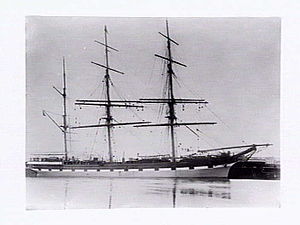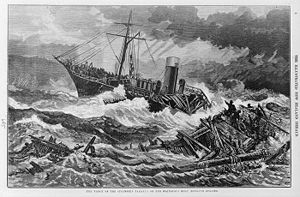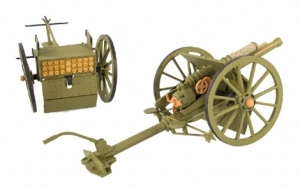Each month in the Modellers Shipyard free monthly email newsletter we take a look at a Naval Saying from around the world.
There are many sayings and expressions that originate from language used historically by sailors. These sayings described specific aspects of life at sea and maritime traditions, and often referred to parts of sailing ships. Many of these expressions date from the late eighteenth and nineteenth centuries. Some, over time, have crossed over in to common use, and are still used today, although in many cases the meanings of sayings now are far removed from their original meanings.
Between the Devil and the deep blue sea – In difficulty, faced with two dangerous alternatives.
The phrase was originally ‘Between the Devil and the deep sea’ (and somes ‘the Dead Sea’ or ‘the Red Sea’). The sea turned blue much later and the phrase became well-known via the title of a popular song Between the Devil and the Deep Blue Sea, written by Ted Koehler and Harold Arlen, and recorded by Cab Calloway in 1931.
What’s the source of the original phrase? Well, we would really like to know. CANOE, the Committee to Ascribe a Nautical Origin to Everything, would have us believe that it has a nautical origin (well, they would wouldn’t they?). In her book ‘When a loose cannon flogs a dead horse there’s the devil to pay’ Olivia Isil unambiguously attributes a nautical origin to the phrase, albeit without providing any evidence for that.
Set against that there’s the explanation that this is from the usual meaning of Devil, that is, the supreme spirit of evil. If it’s that Devil we are talking about then the origin is straightforward – the Devil is bad and falling in the deep sea is bad, so when being caught between the two would be cause for concern.
People who like that explanation can point back to Greek mythology for an earlier version of the idea of being caught between evil and the sea. Homer’s Odyssey refers to Odysseus being caught between Scylla (a six-headed monster) and Charybdis (a whirlpool).
To explain the nautical theory we’ll need to define some sailing terminology.
“Devil – the seam between the deck planking and the topmost plank of the ship’s side”.
This seam would need to be watertight and would need filling (caulking) from time to time. On a ship at sea this would presumably require a sailor to be suspended over the side, or at least to stand at the very edge of the deck. Either way it is easy to see how that might be described as ‘between the devil and the deep sea’.
The first recorded citation of ‘the Devil and the deep sea’ in print is in Robert Monro’s His expedition with the worthy Scots regiment called Mac-keyes, 1637:
“I, with my partie, did lie on our poste, as betwixt the devill and the deep sea.”


